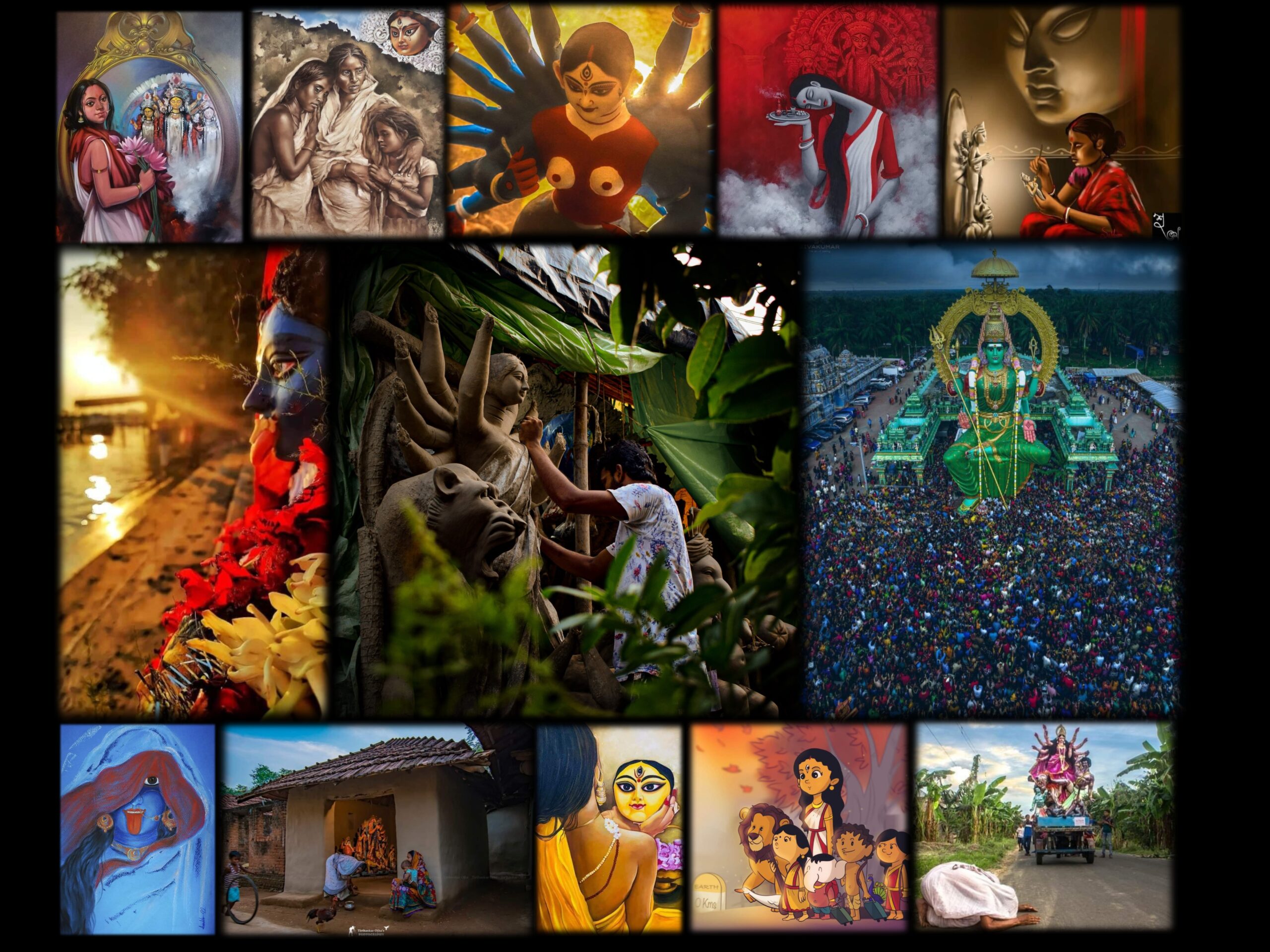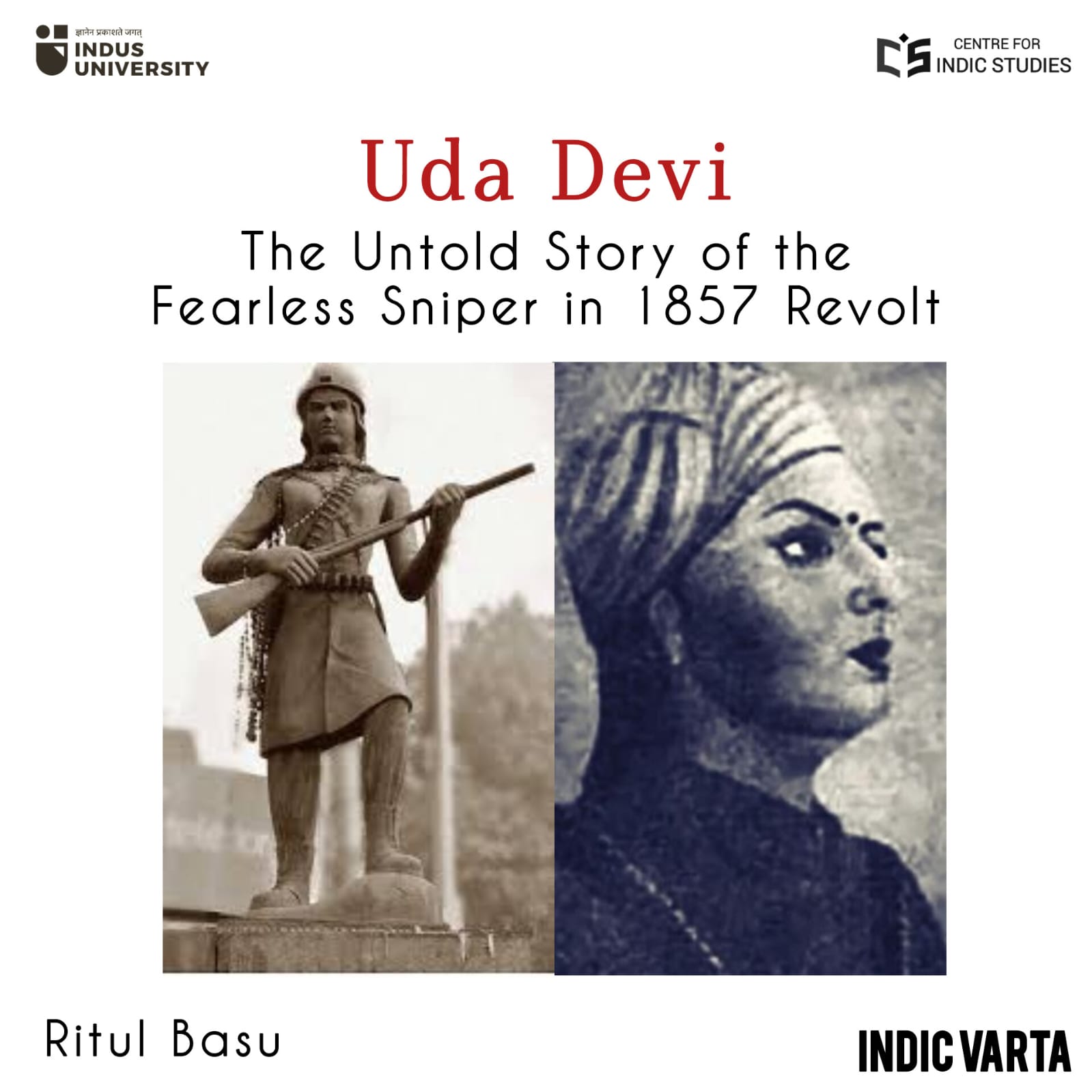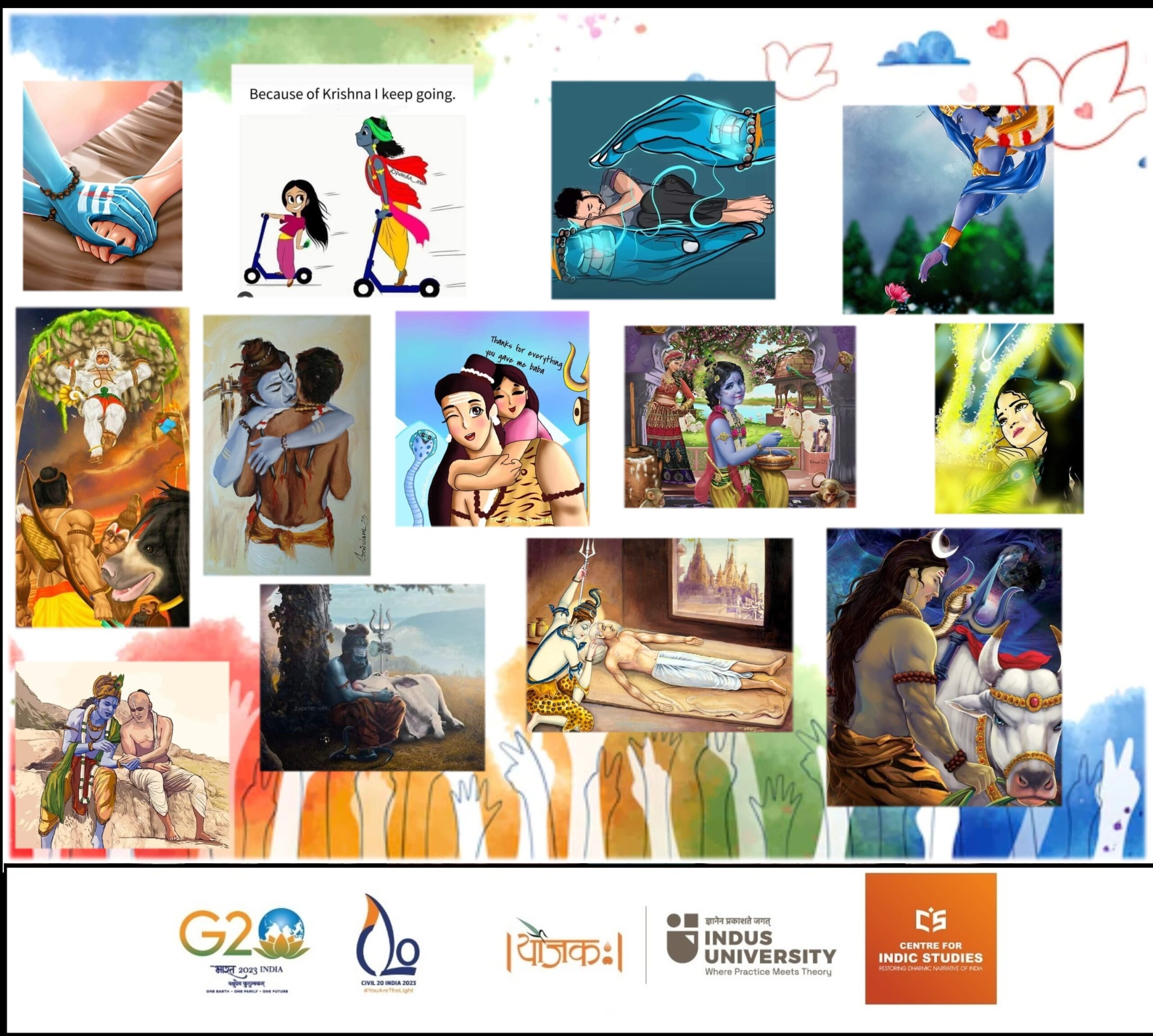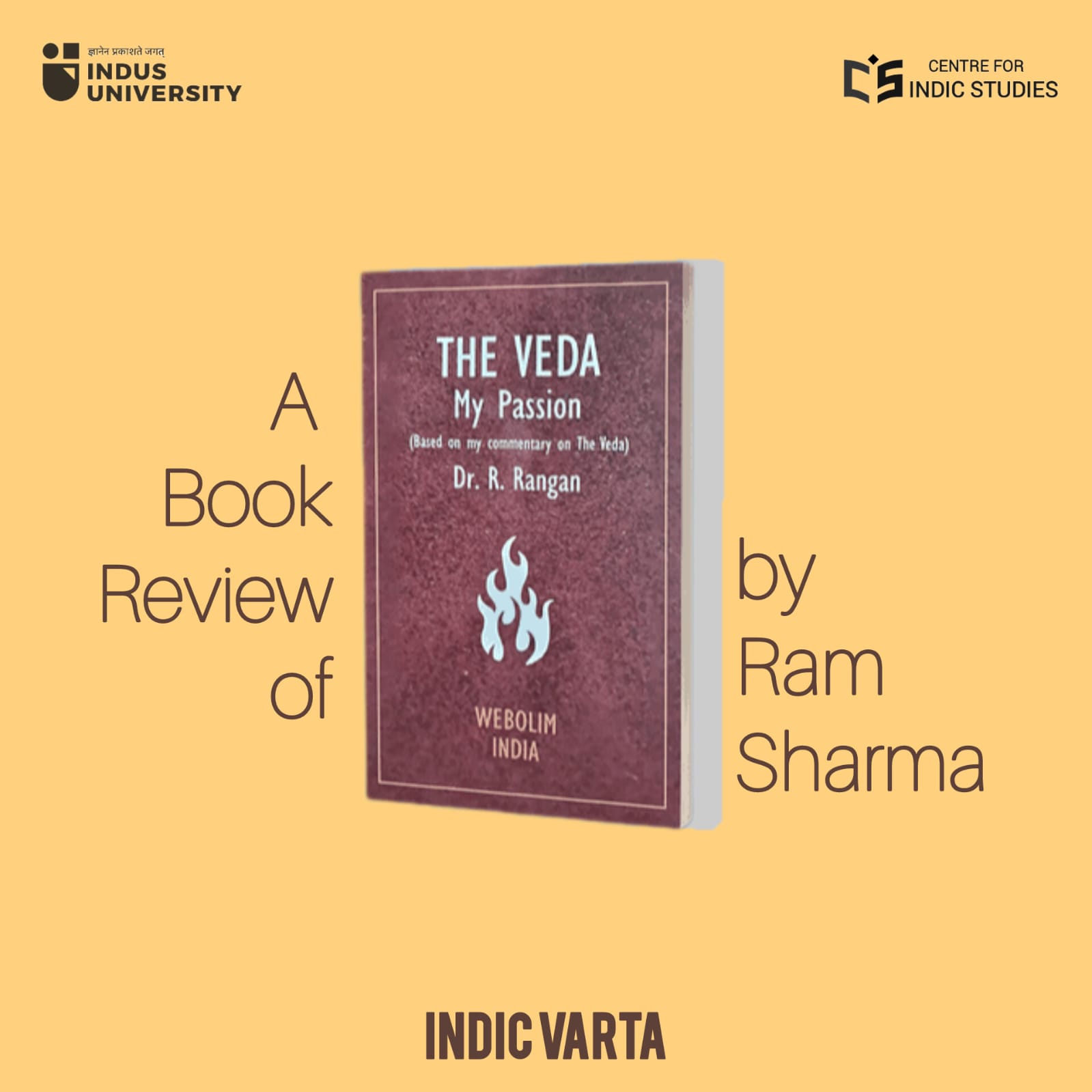- Visitor:14
- Published on:
Invoking Mother Goddess this Navaratri (Part 1)
The conception of divinity as parents, father and mother, which is the most natural and primary mode of worship, is fully seen in the dual deity of Heaven and earth, Dyava-Prthivi, who save from sin, remain by one’s side, gratify and protect one and with wisdom give one moral guidance… The mystic potency, being the wonderful mother who projects this variegated picture of the universe, is not only Illusion (Avidya) that beguiles one, but also, ultimately, Vidya or Spiritual Wisdom, as it is by Her grace that we get over Her and see the truth of Brahman.

AMONG the different devotional moods in which the Vedic seer adored divinity, we find also the approach as to one’s mother: Indra is both father and mother (RK. VIII 98.11) and the waters that one resorts to for purification and rejuvenation are invoked as loving mothers (X.9.2). The conception of divinity as parents, father and mother, which is the most natural and primary mode of worship, is fully seen in the dual deity of Heaven and earth, Dyava-Prthivi, who save from sin, remain by one’s side, gratify and protect one and with wisdom give one moral guidance (1.185.10; 159; 160). The more complete Mother Divine of the Rgveda is Aditi, the mother of all gods. Giving protection from distress, vouchsafing welfare, and above all, freeing from the bondage of sin (a-diti), a concept very near the later moksa, are prominently associated with her. Her name is sufficiently abstract to admit of magnification as the universal mother. Gotama Rāhugaṇa sings:
‘Aditi is heaven, Aditi is sky, Aditi is the mother, the father, the sons; Aditi is all the gods, all the human beings; all that has been and all that will be, all that is Aditi.’ (1.89.10).
which the Atharvaveda takes up and elaborates in an invocation for the gain of spiritual effulgence. The Atharvan (VII.6) invokes Aditi further as the mother of vows, mistress of the moral order, the mighty, ageless, boundless one who bestows welfare and affords excellent guidance. She is described as the divine boat of excellent oars, devoid of leakage, which one may mount to reach well-being. In much the same way, does the well-known Durga-sukta in the Taittiriya Aranyaka (X.1) pray to the Mother Durga, the resplendent Goodess, blazing in her power, whom men resort to for securing the fruits of their acts and who is barge that takes one across easily.
Another aspect-Riches, Plenty, Nourishment and Abundance – is seen in a series of feminine deities of the Rgveda, Purandhi, invoked with Bhaga (bounty, fortune), Dhiṣānā, Ida. The fusion of all these into a full Goddess of Plenty and Beauty is seen in the Śrī or Laksmi to whom one of the well-known supplementary hymns of the Rgveda is devoted; the Śrīsūkta invokes her as the pleasing golden-hued Goddess of brightness, fame and affluence, who destroys poverty, hunger and dirt.
As poets who employed effectively the verbal medium for propitiating their gods, the Vedic seers had a full realization of speech (Vāk) as a god-given gift; the intellectual bases of such creative activity, Sraddha (Faith-Rg), Medha (Intellect- Yajus) and Akuti (Intention-Atharvan) were also adored by him. The above, along with Sarasvati, originally a river- goddess invoked together with Bharati, ushered in the full Goddess of Speech, who herself recounts her glory in a whole hymn (Rk. X.125); She is the power by which all the gods are powerful in their respective ways; if she desires she would make one formidable, a man of intellect, a Rși.
The Goddess, as more specifically the consort of a God, is seen in names like Indrānī, Varuṇānī, Rudrāṇī, etc. More important than these is the abstract conception of a Power residing in a Supreme Being; such a conception is met with in the well-known cosmogenic hymn (X.129) which says: That one breathed without breath by its own power (sva-dha); by the power of its heat (Tapas), it became, and desire (Kama) was its first seed. All this has its corresponding utterance in the Upanisads, where this same Tapas and Kama of the Brahman are mentioned. There, this innate creative power of the One is called Ikṣaṇa: the One Being ‘saw’ reflected or willed that it might become many. (Chandogya II.3). It desired that it might multiply, underwent Tapas and created (Taittiriya II.6); the Brihadaranyaka more explicitly refers to this İkṣaṇa or Kama, in terms of woman and wife (Stri, Patni, I.iv.3).
The conception of Vak (speech) as the Mother of everything progressed further when the Satapatha Brahmana interpreted esoterically that Prajapati’s first creation, namely Water that stood pervading everything, was really the all-pervasive Vāk, who thus became his daughter as well as the spouse, through whom further creation took place of in the Upanisads, Vak was glorified and all-embracing and the essence of all sound, OM, the mystic syllable, was taught as the nearest symbol of the Supreme Being. This trend is to be borne in mind to understand the later development by the grammarians of a philosophy of an ultimate imperishable sound-substratum, called Sphota or Sabda-Brahman, of which the world of objects was an emanation, and certain schools of Saivas and Saktas who identified the subtle sound-principle with Sakti explained evolution in terms of the unfoldment of speech and the alphabet.
The creative potency of the Supreme Being emerges more concretely with the later famous names of Sakti and Maya in the Svetasvatara Upanisad, where the theistic trend makes the Supreme being, the Great Lord, Maheśvara, and the Samkhya trend makes the Lord’s mystic potency, Māyā, the Prakriti or Primordeal Nature (IV.10). This Sakti concealed within the Lord’s own qualities (1.3) is supreme, manifold, innate in the Lord and active through his knowledge and power (VI.8).
The earlier Kena Upanisad is important, as it is here that we come across the Mother Supreme in personal form and name as Uma Haimavati. In a beautiful legend, the Upanisad tells us how the faculties and the powers of different gods go ultimately to the foundation of Brahman, whose glory all others live by. Brahman appears as the formidable Yakṣa, against whom Fire and wind are powerless and before the humbled Indra, Uma Haimavatī appears and imparts the teaching that not they, but the Brahman is the real victor. Retelling the story, the Devi-bhagavata (XII.8) says that Mother herself appeared as the formidable Yakṣa for the purpose of teaching the gods. According to Sankara and Sayana, this Uma who imparts the knowledge of Brahman is Vidya or Brahma-Vidya, Spiritual knowledge itself. “Uma indeed means knowledge.’ Mr. Charles Jhonston says (Journal of the RAS, London, 1894, p.866).
‘Uma is really a pure Aryan word, at the present day in use among a hundred million speakers of Aryan languages, including the whole Slavonic family. In Russian, for instance, we have Um (in compounds Umo) and in Bohemian Uma, meaning ‘knowledge’ or ‘wisdom’ exactly the meaning which Sankara and Sayana give to Umā. The same word Um or Uma, meaning ‘wisdom’ or ‘knowledge’ with a number of verbal and adjectival compounds is found in Polish, Croatian, Dalmatian, and Slovenish, as well as in the three Russian dialects, and in Bohemian’.
Abhinavagupta, the great Kashmirian philosopher, would interpret Ama as meaning the Goddess of spiritutal knowledge (Paratrimśikä-vivarana, Kashmir Texts, p. 60).
Such a conception of Sakti or Māyā is not incompatible with monism. In fact, later Advaitic practice admits Devi- upāsanā among its sadhanas. The mystic potency, being the wonderful mother who projects this variegated picture of the universe, is not only Illusion (Avidya) that beguiles one, but also, ultimately, Vidya or Spiritual Wisdom, as it is by Her grace that we get over Her and see the truth of Brahman. All Devipuranas like the Devi-bhagavata are advaitic; advaitic also is the school of Sakta philosophy expounded by the celebrated Bhaskararāya.
‘The Sakta tantra is a Sadhana-Sastra of monistic (Advaitavada) Vedanta’.
says Arthur Avalon in his Sakti and Sakta (Preface, first edition). Kashmir Saivism is also a monistic system of thought; one of its main characteristies is its eclectism and it assimilates the worship of Sakti and the philosophy of speech. The Mangala Sastra, one of its Agamas, says that the whole world is but the various Saktis of the one great God, who is the possessor of that Sakti. Abhinavagupta says:
The impartite knowledge itself, which has the reflection or the semblance of a three-phased division of the knower, the knowing and the known, is the mother of the universe; hence Maya is herself Vidya. (Paratrimśikä- vivarana, p. 53)
Bibliography:
Taken from the Chapter titled “Mother Worship” from “Facets of the Vedas” by Dr. V. Raghavan
….to be continued.
Center for Indic Studies is now on Telegram. For regular updates on Indic Varta, Indic Talks and Indic Courses at CIS, please subscribe to our telegram channel !
- 7 min read
- 0
- 0










